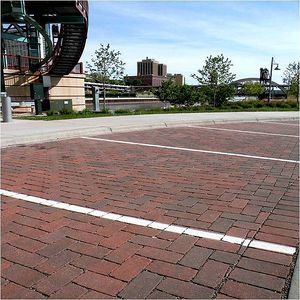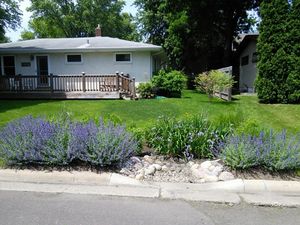
Difference between revisions of "Green Infrastructure benefits of infiltration practices"
m |
m (→Related pages) |
||
| Line 107: | Line 107: | ||
==Related pages== | ==Related pages== | ||
Additional References from the MSM: | Additional References from the MSM: | ||
| − | https://stormwater.pca.state.mn.us/index.php/Infiltration | + | *[https://stormwater.pca.state.mn.us/index.php/Infiltration Infiltration] |
| − | https://stormwater.pca.state.mn.us/index.php?title=Overview_for_infiltration | + | *[https://stormwater.pca.state.mn.us/index.php?title=Overview_for_infiltration Overview for infiltration] |
| − | https://stormwater.pca.state.mn.us/index.php?title=Design_criteria_for_infiltration | + | *[https://stormwater.pca.state.mn.us/index.php?title=Design_criteria_for_infiltration Design criteria for infiltration] |
| − | https://stormwater.pca.state.mn.us/index.php?title=Construction_specifications_for_infiltration | + | *[https://stormwater.pca.state.mn.us/index.php?title=Construction_specifications_for_infiltration Construction specifications for infiltration] |
| − | https://stormwater.pca.state.mn.us/index.php?title=Operation_and_maintenance_of_stormwater_infiltration_practices | + | *[https://stormwater.pca.state.mn.us/index.php?title=Operation_and_maintenance_of_stormwater_infiltration_practices Operation and maintenance of infiltration practices] |
| − | https://stormwater.pca.state.mn.us/index.php?title=Assessing_the_performance_of_infiltration | + | *[https://stormwater.pca.state.mn.us/index.php?title=Assessing_the_performance_of_infiltration Assessing the performance of infiltration] |
| − | https://stormwater.pca.state.mn.us/index.php?title=Calculating_credits_for_infiltration | + | *[https://stormwater.pca.state.mn.us/index.php?title=Calculating_credits_for_infiltration Calculating credits for infiltration] |
| − | https://stormwater.pca.state.mn.us/index.php?title=Case_studies_for_infiltration | + | *[https://stormwater.pca.state.mn.us/index.php?title=Case_studies_for_infiltration Case studies for infiltration] |
| − | https://stormwater.pca.state.mn.us/index.php?title=External_resources_for_infiltration | + | *[https://stormwater.pca.state.mn.us/index.php?title=External_resources_for_infiltration External resources for infiltration] |
| − | https://stormwater.pca.state.mn.us/index.php?title=References_for_infiltration | + | *[https://stormwater.pca.state.mn.us/index.php?title=References_for_infiltration References for infiltration] |
| − | https://stormwater.pca.state.mn.us/index.php?title=Requirements,_recommendations_and_information_for_using_infiltration_basin/underground_infiltration_BMPs_in_the_MIDS_calculator | + | *[https://stormwater.pca.state.mn.us/index.php?title=Requirements,_recommendations_and_information_for_using_infiltration_basin/underground_infiltration_BMPs_in_the_MIDS_calculator Underground infiltration BMPs in the MIDS Calculator] |
| − | https://stormwater.pca.state.mn.us/index.php?title=Understanding_and_interpreting_soils_and_soil_boring_reports_for_infiltration_BMPs | + | *[https://stormwater.pca.state.mn.us/index.php?title=Understanding_and_interpreting_soils_and_soil_boring_reports_for_infiltration_BMPs Understanding and interpreting soils and soil boring reports for infiltration BMPs] |
| − | https://stormwater.pca.state.mn.us/index.php?title=Determining_soil_infiltration_rates | + | *[https://stormwater.pca.state.mn.us/index.php?title=Determining_soil_infiltration_rates Determining soil infiltration rates] |
Revision as of 18:42, 8 November 2022
Infiltration is the practice of draining water into soils, typically through engineered systems such as rain gardens, infiltration basins, grass swales and detention ponds with infiltration benches. The practice of infiltration is beneficial for soils, maintaining natural hydrology, and has a significant water quality impact for downstream lakes, rivers, and ponds. The practice of infiltration can reduce the amount of pollutant runoff an area discharges and reduce the cost of polluted surface water treatment required for Minnesotans surface and groundwaters to stay clean. Infiltration practices is a key component of GI to promote the health and well-being of animals, vegetation, and the people that rely upon these waters when designing sites.
Various constructed landscapes can be used to perform infiltration. Some of the more common methods include
- infiltration basins and trenches,
- rain gardens,
- vegetated swales,
- underground infiltration systems,
- permeable pavement, and
- tree trenches.
For further reading on different types of infiltration, Stormwater infiltration Best Management Practices and BMPs for stormwater infiltration.
Contents
Green infrastructure and multiple benefits
Green infrastructure (GI) encompasses a wide array of practices, including stormwater management. Green stormwater infrastructure (GSI) encompasses a variety of practices primarily designed for managing stormwater runoff but that provide additional benefits such as habitat or aesthetic value.
There is no universal definition of GI or GSI (link here for more information). Consequently, the terms are often interchanged, leading to confusion and misinterpretation. GSI practices are designed to function as stormwater practices first (e.g. flood control, treatment of runoff, volume control), but they can provide additional benefits. Though designed for stormwater function, GSI practices, where appropriate, should be designed to deliver multiple benefits (often termed "multiple stacked benefits". For more information on green infrastructure, ecosystem services, and sustainability, link to Multiple benefits of green infrastructure and role of green infrastructure in sustainability and ecosystem services.
Green Infrastructure benefits of infiltration practices
- Water quality
- Pollutant loads leaving an area are reduced in stormwater runoff when infiltration methods are used
- Stability provided by infiltration techniques reduces erosion levels and stabilize waterways, reducing Total Suspended Solids (TSS) and promoting water clarity
- Reduction of baseflow lowers the amount of downstream polluting; preventing excessive levels of contaminants from congregating in major water sources
- Water quantity and hydrology:
- Reduction in total water volume movement and retardation of peak flow from rainfall events
- Protects the areas that are downstream of the site from flooding
- Infiltration promotes the recharge of local groundwater
- A well designed infiltration practice promotes plant vegetation growth through increased groundwater levels
- Larger infiltration practices that incorporate trees and shade providing plants reduce air conditioning costs (Using Trees and Vegetation to Reduce Heat Islands | US EPA)
- Reducing surface water flow can prevent of road deterioration and provide less maintenance costs (Using Trees and Vegetation to Reduce Heat Islands | US EPA)
- Air quality:
- Benefits of infiltration practices are largely indirect, such as sequestration of carbon and other greenhouse gasses
- Climate resiliency:
- Properly installed infiltration practices reduce the impact of flooding during rainfall events
- The growth of vegetated infiltration systems promote photosynthesis and carbon removal
- The incorporation of larger plants such as trees or vegetation that provides shade reduces effects of heat islands (What You Can Do to Reduce Heat Islands | US EPA)
- Habitat improvement:
- Reduction of soil erosion and increased soil stability promotes vegetation growth that stabilizes a site
- The flow reduction of water runoff reduces water temperature changes that harm wildlife such as fish
- Infiltration promotes vegetation and biota growth, vegetative filtering, soil adsorption, and gravitational settling of pollutants moved by rainfall events
- Community livability:
- Well designed infiltration practices helps to protect recreation sites for people by ensuring safe and healthy access to water sources
- Water quality benefits from infiltration promotes healthy water sources for diverse vegetation growth. This diversity allows for heterogeneous and healthy plant growth
- Incorporating aesthetically pleasing landscaping when planning infiltration systems may help improve mental health of the site users (What are the physical and mental benefits of gardening? - MSU Extension)
- Larger infiltration practices involving trees and shade providing vegetation can reduce temperature levels considerably through the shade they provide (Reducing Urban Heat Islands: Compendium of Strategies: Trees and Vegetation (epa.gov))
- Health benefits:
- Infiltration provides cleaner waterways through the reduction of nutrients, pathogens, metals, TSS, and phosphorus and provides healthier environments to the humans, wildlife, and vegetation that use these waters
- Increased longevity for fish and wildlife in the area through the reduction of hazardous compounds that would be washed into waterways as rain runoff
- Economic benefits and savings:
- In addition to water quality and flood control benefits, properly designed infiltration can prevent downstream cleanup costs
- Well maintained infiltration systems combined with vegetation may increase property aesthetics and property value
Design considerations
Maximizing specific green infrastructure (GI) benefits of constructed areas requires design considerations prior to installation. While site limitations cannot always be overcome, the following recommendations for a designer are given to maximize the GI benefit.
Note: Under the Minnesota Construction Stormwater Permit GI, particularly infiltration, must be considered first when selecting stormwater treatment methods. However, if Class D soils are present on the site infiltration practices cannot be used. Class A soils are the most desirable for infiltration but infiltration systems can also be successful with B or C soils. --- Maybe add a chart indicating soil penetrability of different HSG groups —
- Water quality
- Construction of the infiltration system should be done in a location where the majority of water will flow through
- Design infiltration basins to maximize retention time and prevent short-circuiting
- Infiltration systems with ecological diversity can help promote water quality treatment and maximize the amount of pollutants removed while providing healthy habitats for pollinators, and other key wildlife
- Ensure an adequate treatment train is constructed to meet the desired water quality (Pre-treatment considerations for stormwater infiltration - Minnesota Stormwater Manual (state.mn.us))
- Diversifying the vegetation will remove a wider range of pollutants and maximize the water treatment
- Water quantity and hydrology:
- Distribute constructed infiltration systems throughout the site to increase the delivered benefits
- Climate resiliency:
- Vegetation establishment is essential for carbon sequestration
- Infiltration systems that treat water quality will reduce the offsite pollutant overloading that can be damaging to ecosystems
- Habitat improvement:
- Providing a littoral shelf for the growth of macrophytes in an infiltration system promotes healthier wildlife populations
- Planting plants for pollinators in infiltration systems is an effective area to establish healthier pollinator colonies — link to pollinator page
- Community livability:
- Include recreational infrastructure and interpretative signs
- Construct the infiltration system in a way that ensures safety and perceived safety of the area. A few examples would be to use shallower infiltration systems to avoid child accidents, attracting pollinators that are appropriate for the nearby community, or planting shrubs, fencing, or vegetation that prevents people from entering the system
- Conduct surveys prior to and after development to identify community desires and construct features that enhance education, recreation, and other benefits of infiltration
- Develop conveyance systems in such a way to minimize changes in temperature that can be detrimental to wildlife such a temperature sensitive fish
- Health benefits:
- Infiltration that incorporates landscaping principles reduce heat stress associate with heat islands (Reducing Urban Heat Islands: Compendium of Strategies: Trees and Vegetation (epa.gov))
- Infiltration that incorporates landscaping principles increases the mental health of the communities that use the area (What are the physical and mental benefits of gardening? - MSU Extension)
- Infiltration systems naturally control mosquito habitats by going dry within a few days compared to stormwater ponds
- Economic benefits and savings:
- Properly designed infiltration can prevent downstream cleanup costs
- Infiltration systems that incorporate desired landscape vegetation may increase property aesthetics and value
Recommended reading
The Minnesota Stormwater Manual offers a chart to help designers with a cost-benefit analysis for infiltration linked here. The Pollution Control Agency allows for infiltration to be used as a credit source when meeting pollutant budgets for Total Suspended Solids (TSS) and Total Phosphorus (TP). The methodology for counting credits can be found here. Additional Information:
- Infiltration practices do not get water quality volume treatment credit when constructed in Class D soils.
- Class D soils are prohibited for use when building infiltration systems
- EPA recommended guidelines for designing areas prone to floods can be found in the following link A Guide to Assessing Green Infrastructure Costs and Benefits for Flood Reduction (noaa.gov)
References
Support material Outside MSM Links to include/reference: Y - good picture graphic for infiltration and groundwater recharge and simple explanation of groundwater - https://www.usgs.gov/special-topics/water-science-school/science/infiltration-and-water-cycle
Y - Reference for part of above built table - neat pictures - https://www.ashbyma.gov/plan/subdivision%20docs/breitmaier/160923%20plans-docs/Stormwater%20Report/BMP%20-%20Infiltration%20Basin.pdf
Y - Cost benefit table - https://stormwater.pca.state.mn.us/index.php/Cost-benefit_considerations_for_infiltration
M - good guidelines for developing green infrastructure though - https://coast.noaa.gov/data/docs/digitalcoast/gi-cost-benefit.pdf
Decent picture - Infiltration and the Water Cycle | U.S. Geological Survey (usgs.gov)
Related pages
Additional References from the MSM:
- Infiltration
- Overview for infiltration
- Design criteria for infiltration
- Construction specifications for infiltration
- Operation and maintenance of infiltration practices
- Assessing the performance of infiltration
- Calculating credits for infiltration
- Case studies for infiltration
- External resources for infiltration
- References for infiltration
- Underground infiltration BMPs in the MIDS Calculator
- Understanding and interpreting soils and soil boring reports for infiltration BMPs
- Determining soil infiltration rates

